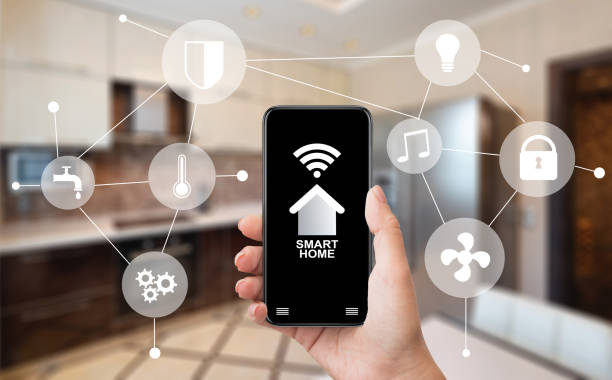
In today’s interconnected world, the Internet of Things (IoT) has become an integral part of our daily lives, offering convenience and efficiency.
However, the proliferation of IoT devices also raises concerns about security vulnerabilities.
In this blog post, we will guide you through setting up a secure IoT network at home, ensuring that you can enjoy the benefits of a connected environment without compromising your safety.
Assess Your IoT Needs and Risks

Before diving into setting up your IoT network, it’s essential to assess your specific needs and potential risks.
Take inventory of the IoT devices you plan to integrate into your home network and identify their security features and requirements.
According to Risk Publishing, understanding the potential risks associated with each device will help you develop a comprehensive security strategy.
Considerations like data privacy, device updates, and communication protocols are crucial when evaluating IoT devices.
Moreover, be aware of the implications of a compromised IoT device and its potential impact on your home network and personal data.
By conducting a thorough assessment, you lay the groundwork for a secure IoT setup.
Secure Your Home Wi-Fi Network
Norton says securing your home Wi-Fi network is the first line of defence in protecting your IoT devices.
Start by changing the default network name (SSID) and router login credentials.
Strong, unique passwords are critical to prevent unauthorised access.
Enable WPA3 or WPA2 encryption on your Wi-Fi router, as these provide better security than older encryption protocols.
Regularly update your router’s firmware to ensure it has the latest security patches.
Additionally, consider creating a guest network for visitors to keep your primary network separate from potentially unsecured devices.
Segment Your IoT Devices
Segmenting your IoT devices involves creating separate networks or subnets for different types of devices.
This practice isolates your critical devices, such as computers and smartphones, from your IoT devices, limiting potential damage if one of your IoT devices is compromised.
Most modern routers offer VLAN (Virtual Local Area Network) support, enabling you to create separate networks for your IoT devices.
This segmentation prevents unauthorised access to sensitive data and minimises the attack surface for potential cyber threats.
Implement Robust Authentication and Authorization
Ensuring strong authentication and authorization mechanisms for your IoT devices is crucial to preventing unauthorised access.
Many IoT devices come with default login credentials, which are easy targets for hackers.
When setting up your IoT devices, change the default usernames and passwords to unique, strong credentials.
Consider implementing multi-factor authentication (MFA) whenever possible.
MFA adds an extra layer of security by requiring additional verification, such as a one-time code sent to your smartphone, before granting access.
Keep Your Devices and Software Up-to-date
Outdated software and firmware are often vulnerable to known exploits.
Cybercriminals exploit these weaknesses to gain unauthorised access to your devices and home network.
Regularly check for updates for your IoT devices and apply them promptly.
Enable automatic updates whenever possible to ensure your devices receive critical security patches in a timely manner.
Additionally, set up alerts for firmware updates and security notifications to stay informed about potential risks.
Enable Network Traffic Monitoring
Monitoring your home network’s traffic allows you to identify suspicious activities and potential security breaches.
Some routers come with built-in network monitoring features, or you can use third-party software solutions for this purpose.
ManageNetwork cited that network traffic monitoring enables you to detect unusual patterns or unexpected connections, indicating a potential cyber attack or data breach.
With this proactive approach, you can respond promptly to mitigate security risks and maintain a secure IoT network.
Secure Your IoT Data
IoT devices collect and transmit data, which can be sensitive and personal. Securing your IoT data is crucial to safeguarding your privacy.
Encrypting your IoT data as it travels between devices and your home network prevents unauthorised access and ensures confidentiality.
Implement end-to-end encryption whenever possible, especially for devices that store personal information.
Okay my lovely readers, now let us look into some frequently asked questions (FAQs) about How to set up a secure IoT network at home.
How can I set up a secure IoT network at home?
Setting up a secure IoT network involves steps like changing default device passwords, updating firmware regularly, using strong encryption, and creating a separate network for IoT devices.
Why is securing an IoT network important for homes?
Securing an IoT network is vital to protect personal data, prevent unauthorised access, and guard against potential cyber threats that can compromise both privacy and safety.
How do I prevent IoT devices from becoming entry points for hackers?
To prevent IoT devices from becoming entry points for hackers, keep devices updated, use strong, unique passwords, disable unnecessary features, and regularly monitor device activity.
Can I ensure privacy while using IoT devices at home?
Yes, you can ensure privacy by reviewing device permissions, disabling data sharing features, monitoring device connections, and using IoT devices from reputable manufacturers.
Conclusion
Setting up a secure IoT network at home is not just about enjoying the convenience of interconnected devices; it’s about protecting your safety and privacy in an increasingly connected world.
By assessing your IoT needs and risks, securing your home Wi-Fi network, segmenting your IoT devices, implementing strong authentication and authorization, keeping your devices up-to-date, enabling network traffic monitoring, and securing your IoT data, you can build a robust defence against potential cyber threats.
A secure IoT network provides peace of mind, allowing you to fully embrace the benefits of smart technology without compromising your safety.
Remember, security is an ongoing process, and regular maintenance and updates are vital to maintaining a safe and connected home environment.
By following these guidelines, you empower yourself to make the most of IoT technology while staying protected in the digital age.








